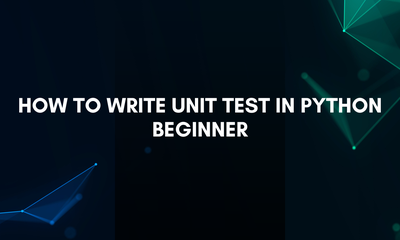Cách đánh giá yêu cầu kéo
By JoeVu, at: 15:00 Ngày 24 tháng 1 năm 2023
Thời gian đọc ước tính: __READING_TIME__ phút


Việc nhận và xem xét các yêu cầu pull (pull request) là một phần thiết yếu trong quy trình phát triển phần mềm. Một yêu cầu pull là một yêu cầu để hợp nhất các thay đổi mã từ một nhánh vào một nhánh khác, thường từ một fork của kho lưu trữ của nhà phát triển vào kho lưu trữ chính. Yêu cầu pull cho phép các nhà phát triển đề xuất các thay đổi cho một dự án, sau đó có thể được xem xét, thảo luận và chấp nhận hoặc từ chối.
Trong bài viết này, chúng tôi sẽ giải thích quy trình xem xét một yêu cầu pull và các bước cần thực hiện để đảm bảo rằng quá trình xem xét đó toàn diện và hữu ích.
Hiểu vấn đề
Điều quan trọng là hiểu một yêu cầu pull là gì và tại sao nó lại quan trọng. Một yêu cầu pull là một yêu cầu từ một nhà phát triển để hợp nhất các thay đổi mã từ một nhánh sang một nhánh khác. Điều này rất quan trọng vì nó cho phép các nhà phát triển đóng góp vào một dự án, đồng thời đảm bảo rằng các thay đổi được xem xét trước khi chúng được hợp nhất vào nhánh chính.
Các câu hỏi cần đặt ra:
- Vấn đề/tính năng ban đầu là gì? Tính năng mới hoạt động như thế nào?
- Làm thế nào để tái tạo vấn đề?
- Điều gì sẽ xảy ra nếu thay đổi không được đưa ra?
Biết về sự thay đổi
Khi xem xét một yêu cầu pull, người xem xét trước tiên nên xem xét các thay đổi đã được thực hiện. Điều này bao gồm việc xem xét các thay đổi mã, cũng như bất kỳ tài liệu nào đã được thêm hoặc sửa đổi. Người xem xét cũng nên xem xét các thông báo commit và nhận xét để đảm bảo rằng các thay đổi là phù hợp và được giải thích rõ ràng.
Các câu hỏi cần đặt ra:
- Thay đổi này có giải quyết vấn đề hoàn toàn hay một phần không?
- Tất cả các thông báo commit đều có ý nghĩa không?
- Mã có được kiểm thử tốt không? Có bất kỳ bài kiểm tra đơn vị nào không? Bài kiểm tra có bao phủ tất cả các trường hợp không?
Tác động của sự thay đổi
Người xem xét sau đó nên xem xét tác động của yêu cầu pull đến dự án. Điều này bao gồm việc xem xét bất kỳ bài kiểm tra nào đã được thêm hoặc sửa đổi, cũng như bất kỳ thay đổi nào khác có thể ảnh hưởng đến dự án. Điều quan trọng cũng là xem xét hiệu suất của các thay đổi mã, vì điều này có thể ảnh hưởng đến sự ổn định và khả năng mở rộng của dự án.
Các câu hỏi cần đặt ra:
- Tác dụng phụ của sự thay đổi đối với các tính năng/mã khác là gì?
- Điều gì sẽ xảy ra nếu thay đổi bị hoàn nguyên?
- Thay đổi này có di chuyển các schema và cơ sở dữ liệu hiện có không?
- Nó có ảnh hưởng đến các bài kiểm tra khác không?
Viết nhận xét
Sau khi người xem xét hài lòng rằng các thay đổi là phù hợp, họ nên để lại nhận xét trên yêu cầu pull, chấp nhận hoặc từ chối các thay đổi. Nếu có bất kỳ mối quan ngại hoặc câu hỏi nào, người xem xét cũng nên để lại nhận xét trên yêu cầu pull để thảo luận về các thay đổi.
Điều quan trọng đối với người xem xét là cung cấp phản hồi mang tính xây dựng về các thay đổi. Điều này có thể bao gồm việc chỉ ra bất kỳ vấn đề tiềm ẩn nào, cũng như đề xuất các cải tiến có thể được thực hiện. Phản hồi này rất cần thiết để giúp nhà phát triển cải thiện mã của họ và cho toàn bộ dự án.
Các câu hỏi cần đặt ra:
- Mã này tốt hay xấu? Nó có tuân theo bất kỳ phong cách mã hóa nào không? Tại sao?
- Làm thế nào để cải thiện nó?
- Các giải pháp khác là gì?
- Có bất kỳ phần mã nào mà người xem xét không hiểu không?
Có một số quy tắc/bước mà chúng ta nên tuân theo:
- Hiểu triết lý "Clean Code"
Đây là những điều cơ bản mà tất cả các lập trình viên phải biết để cung cấp mã/sản phẩm tốt, cuốn sách này cung cấp các hướng dẫn hữu ích để viết mã sạch.
- Hiểu các thực tiễn tốt nhất
Mỗi framework đều có các thực tiễn tốt nhất của riêng mình được cộng đồng và các nhà phát triển giàu kinh nghiệm đề xuất, ví dụ: Django Two Scoops là cuốn sách hay nhất về các thực tiễn tốt nhất của Django
- Tuân theo framework và phong cách mã hóa của nhóm
Có cùng một phong cách mã hóa cho toàn bộ nhóm mang lại rất nhiều lợi ích về mặt quá trình xem xét, quá trình phát triển và gỡ lỗi. Mọi người đều biết và dễ dàng nắm bắt mã và ý tưởng của người khác. Trong khi đó, tất cả các thành viên nên tuân theo phong cách mã hóa của framework để mọi thứ sẽ nhất quán.
- Đảm bảo chủ sở hữu PR viết các bài kiểm tra đơn vị cho các thay đổi của mình
Kiểm thử là sự đảm bảo an toàn và chính xác cho sự thay đổi, không có kiểm thử thì bản cập nhật mới sẽ bị lỗi.
- Đảm bảo mã được tối ưu hóa tốt
Đây là điều bắt buộc phải kiểm tra bất kỳ yêu cầu pull nào, việc đặt ra những câu hỏi dưới đây giúp người xem xét có cái nhìn sâu sắc hơn:
- Việc sử dụng bộ nhớ, hiệu suất có tốt không?
- Có giải pháp nào tốt hơn không?
- Có bất kỳ yêu cầu/truy vấn nào dư thừa không?
- Việc sử dụng bộ nhớ, hiệu suất có tốt không?
- Cung cấp phản hồi mang tính xây dựng
- Bắt đầu bằng một điều tích cực. Bắt đầu phản hồi của bạn bằng cách làm nổi bật một khía cạnh tích cực trong công việc của cá nhân. Điều này sẽ giúp làm giảm bớt sự chỉ trích nào sau đó.
- Giải thích điều gì đã sai. Hãy cụ thể khi thảo luận về bất kỳ vấn đề nào với công việc của cá nhân.
- Cung cấp giải pháp. Đề xuất các giải pháp để cải thiện tình hình và cung cấp cho cá nhân các nguồn lực hoặc thông tin để giúp họ tiến bộ.
- Hãy cởi mở. Lắng nghe phản hồi của cá nhân và sẵn sàng xem xét các quan điểm khác.
- Kết thúc bằng một ghi chú tích cực. Thừa nhận tiến độ đã đạt được và củng cố các khía cạnh tích cực trong công việc của cá nhân.
Việc cung cấp phản hồi không bao giờ dễ dàng, mọi người đều…
- Bắt đầu bằng một điều tích cực. Bắt đầu phản hồi của bạn bằng cách làm nổi bật một khía cạnh tích cực trong công việc của cá nhân. Điều này sẽ giúp làm giảm bớt sự chỉ trích nào sau đó.
- Xem xét có nghĩa là học hỏi, hãy nghiêm túc
Hãy chú ý cẩn thận khi xem xét một yêu cầu pull và hãy nghiêm túc với quá trình học hỏi. Nó thường được sử dụng để nhắc nhở các nhà phát triển cần phải siêng năng và tận tâm khi họ đang học hoặc xem xét các thay đổi của người khác mà họ đã học.
Tóm lại, việc xem xét một yêu cầu pull là một phần quan trọng trong quy trình phát triển phần mềm. Điều quan trọng đối với người xem xét là xem xét các thay đổi, đánh giá tác động của chúng đến dự án và cung cấp phản hồi mang tính xây dựng. Bằng cách tuân theo các bước này, người xem xét có thể đảm bảo rằng yêu cầu pull là toàn diện và hữu ích.





